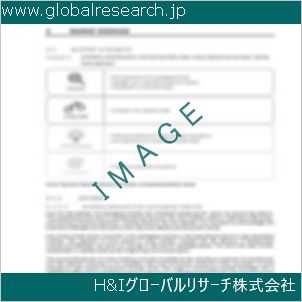Table of Contents
1 Industry Overview of Sodiumhydroxide
1.1 Definition and Specifications of Sodiumhydroxide
1.1.1 Definition of Sodiumhydroxide
1.1.2 Specifications of Sodiumhydroxide
1.2 Classification of Sodiumhydroxide
1.3 Applications of Sodiumhydroxide
1.3.1 Nuclear Application
1.3.2 Non-Nuclear Application
1.4 Industry Chain Structure of Sodiumhydroxide
1.5 Industry Overview and Major Regions Status of Sodiumhydroxide
1.5.1 Industry Overview of Sodiumhydroxide
1.5.2 Global Major Regions Status of Sodiumhydroxide
1.6 Industry Policy Analysis of Sodiumhydroxide
1.7 Industry News Analysis of Sodiumhydroxide
2 Manufacturing Cost Structure Analysis of Sodiumhydroxide
2.1 Raw Material Suppliers and Price Analysis of Sodiumhydroxide
2.2 Equipment Suppliers and Price Analysis of Sodiumhydroxide
2.3 Labor Cost Analysis of Sodiumhydroxide
2.4 Other Costs Analysis of Sodiumhydroxide
2.5 Manufacturing Cost Structure Analysis of Sodiumhydroxide
2.6 Manufacturing Process Analysis of Sodiumhydroxide
3 Technical Data and Manufacturing Plants Analysis of Sodiumhydroxide
3.1 Capacity and Commercial Production Date of Global Sodiumhydroxide Major Manufacturers in 2023
3.2 Manufacturing Plants Distribution of Global Sodiumhydroxide Major Manufacturers in 2023
3.3 R&D Status and Technology Source of Global Sodiumhydroxide Major Manufacturers in 2023
3.4 Raw Materials Sources Analysis of Global Sodiumhydroxide Major Manufacturers in 2023
4 Capacity, Production and Revenue Analysis of Sodiumhydroxide by Regions, Types and Manufacturers
4.1 Global Capacity, Production and Revenue of Sodiumhydroxide by Regions 2019-2024
4.2 Global and Major Regions Capacity, Production, Revenue and Growth Rate of Sodiumhydroxide 2019-2024
4.3 Global Capacity, Production and Revenue of Sodiumhydroxide by Types 2019-2024
4.4 Global Capacity, Production and Revenue of Sodiumhydroxide by Manufacturers 2019-2024
5 Price, Cost, Gross and Gross Margin Analysis of Sodiumhydroxide by Regions, Types and Manufacturers
5.1 Price, Cost, Gross and Gross Margin Analysis of Sodiumhydroxide by Regions 2019-2024
5.2 Price, Cost, Gross and Gross Margin Analysis of Sodiumhydroxide by Types 2019-2024
5.3 Price, Cost, Gross and Gross Margin Analysis of Sodiumhydroxide by Manufacturers 2019-2024
6 Consumption Volume, Consumption Value and Sale Price Analysis of Sodiumhydroxide by Regions, Types and Applications
6.1 Global Consumption Volume and Consumption Value of Sodiumhydroxide by Regions 2019-2024
6.2 Global and Major Regions Consumption Volume, Consumption Value and Growth Rate of Sodiumhydroxide 2019-2024
6.3 Global Consumption Volume and Consumption Value of Sodiumhydroxide by Types 2019-2024
6.4 Global Consumption Volume and Consumption Value of Sodiumhydroxide by Applications 2019-2024
6.5 Sale Price of Sodiumhydroxide by Regions 2019-2024
6.6 Sale Price of Sodiumhydroxide by Types 2019-2024
6.7 Sale Price of Sodiumhydroxide by Applications 2019-2024
6.8 Market Share Analysis of Sodiumhydroxide by Different Sale Price Levels
7 Supply, Import, Export and Consumption Analysis of Sodiumhydroxide
7.1 Supply, Consumption and Gap of Sodiumhydroxide 2019-2024
7.2 Global Capacity, Production, Price, Cost, Revenue, Supply, Import, Export and Consumption of Sodiumhydroxide 2019-2024
7.3 USA Capacity, Production, Price, Cost, Revenue, Supply, Import, Export and Consumption of Sodiumhydroxide 2019-2024
7.4 EU Capacity, Production, Price, Cost, Revenue, Supply, Import, Export and Consumption of Sodiumhydroxide 2019-2024
7.5 China Capacity, Production, Price, Cost, Revenue, Supply, Import, Export and Consumption of Sodiumhydroxide 2019-2024
7.6 Japan Capacity, Production, Price, Cost, Revenue, Supply, Import, Export and Consumption of Sodiumhydroxide 2019-2024
8 Major Manufacturers Analysis of Sodiumhydroxide
8.1 Manufacturer One
8.1.1 Company Profile
8.1.2 Product Picture and Specifications
8.1.2.1 Type I
8.1.2.2 Type II
8.1.2.3 Type III
8.1.3 Capacity, Production, Price, Cost, Gross and Revenue
8.1.4 Contact Information
8.2 Manufacturer Two
8.2.1 Company Profile
8.2.2 Product Picture and Specifications
8.2.2.1 Type I
8.2.2.2 Type II
8.2.2.3 Type III
8.2.3 Capacity, Production, Price, Cost, Gross and Revenue
8.2.4 Contact Information
8.3 Manufacturer Three
8.3.1 Company Profile
8.3.2 Product Picture and Specifications
8.3.2.1 Type I
8.3.2.2 Type II
8.3.2.3 Type III
8.3.3 Capacity, Production, Price, Cost, Gross and Revenue
8.3.4 Contact Information
8.4 Manufacturer Four
8.4.1 Company Profile
8.4.2 Product Picture and Specifications
8.4.2.1 Type I
8.4.2.2 Type II
8.4.2.3 Type III
8.4.3 Capacity, Production, Price, Cost, Gross and Revenue
8.4.4 Contact Information
8.5 Manufacturer Five
8.5.1 Company Profile
8.5.2 Product Picture and Specifications
8.5.2.1 Type I
8.5.2.2 Type II
8.5.2.3 Type III
8.5.3 Capacity, Production, Price, Cost, Gross and Revenue
8.5.4 Contact Information
…
9 Marketing Trader or Distributor Analysis of Sodiumhydroxide
9.1 Marketing Channels Status of Sodiumhydroxide
9.2 Traders or Distributors with Contact Information of Sodiumhydroxide by Regions
9.3 Ex-work Price, Channel Price and End Buyer Price Analysis of Sodiumhydroxide
9.4 Regional Import, Export and Trade Analysis of Sodiumhydroxide
10 Industry Chain Analysis of Sodiumhydroxide
10.1 Upstream Major Raw Materials Suppliers Analysis of Sodiumhydroxide
10.1.1 Major Raw Materials Suppliers with Contact Information Analysis of Sodiumhydroxide
10.1.2 Major Raw Materials Suppliers with Supply Volume Analysis of Sodiumhydroxide by Regions
10.2 Upstream Major Equipment Suppliers Analysis of Sodiumhydroxide
10.2.1 Major Equipment Suppliers with Contact Information Analysis of Sodiumhydroxide
10.2.2 Major Equipment Suppliers with Product Pictures Analysis of Sodiumhydroxide by Regions
10.3 Downstream Major Consumers Analysis of Sodiumhydroxide
10.3.1 Major Consumers with Contact Information Analysis of Sodiumhydroxide
10.3.2 Major Consumers with Consumption Volume Analysis of Sodiumhydroxide by Regions
10.4 Supply Chain Relationship Analysis of Sodiumhydroxide
11 Development Trend of Analysis of Sodiumhydroxide
11.1 Capacity, Production and Revenue Forecast of Sodiumhydroxide by Regions and Types
11.1.1 Global Capacity, Production and Revenue of Sodiumhydroxide by Regions 2024-2029
11.1.2 Global and Major Regions Capacity, Production, Revenue and Growth Rate of Sodiumhydroxide 2024-2029
11.1.3 Global Capacity, Production and Revenue of Sodiumhydroxide by Types 2024-2029
11.2 Consumption Volume and Consumption Value Forecast of Sodiumhydroxide by Regions, Types and Applications
11.2.1 Global Consumption Volume and Consumption Value of Sodiumhydroxide by Regions 2024-2029
11.2.2 Global and Major Regions Consumption Volume, Consumption Value and Growth Rate of Sodiumhydroxide 2024-2029
11.2.3 Global Consumption Volume and Consumption Value of Sodiumhydroxide by Types 2024-2029
11.2.4 Global Consumption Volume and Consumption Value of Sodiumhydroxide by Applications 2024-2029
11.3 Supply, Import, Export and Consumption Forecast of Sodiumhydroxide
11.3.1 Supply, Consumption and Gap of Sodiumhydroxide 2024-2029
11.3.2 Global Capacity, Production, Price, Cost, Revenue, Supply, Import, Export and Consumption of Sodiumhydroxide 2024-2029
11.3.3 USA Capacity, Production, Price, Cost, Revenue, Supply, Import, Export and Consumption of Sodiumhydroxide 2024-2029
11.3.4 EU Capacity, Production, Price, Cost, Revenue, Supply, Import, Export and Consumption of Sodiumhydroxide 2024-2029
11.3.5 China Capacity, Production, Price, Cost, Revenue, Supply, Import, Export and Consumption of Sodiumhydroxide 2024-2029
11.3.6 Japan Capacity, Production, Price, Cost, Revenue, Supply, Import, Export and Consumption of Sodiumhydroxide 2024-2029
12 New Project Investment Feasibility Analysis of Sodiumhydroxide
12.1 New Project SWOT Analysis of Sodiumhydroxide
12.2 New Project Investment Feasibility Analysis of Sodiumhydroxide
13 Conclusion of the Global Sodiumhydroxide (CAS 1310-73-2) Industry 2024 Market Research Report
| ※参考情報 水酸化ナトリウム(NaOH)は、無機化合物であり、化学的にはナトリウムと水酸基から構成されています。一般に「苛性ソーダ」または単に「ソーダ」とも呼ばれ、強いアルカリ性を持つため、工業や家庭での幅広い用途に利用されています。 水酸化ナトリウムの重要な特徴の一つは、その強い腐食性です。皮膚に触れたり、目に入ったりすると、重篤な損傷を引き起こす可能性があります。このため、取扱いには十分な注意が必要です。また、水酸化ナトリウムは水に非常に溶解しやすく、溶解する際に発熱を伴うため、溶液を作成する際にはその温度変化にも留意しなければなりません。 水酸化ナトリウムは通常、白色の固体またはペレット状の形で存在しており、化学式NaOHに基づく分子構造を持っています。水酸化ナトリウムは、無水物の状態では非常に吸湿性が高く、空気中の水分を容易に吸収するため、保存には密閉容器が推奨されます。 水酸化ナトリウムにはいくつかの種類がありますが、主に工業的にはフレーク状、ペレット状、液体の形で供給されます。フレーク状のものは、乾燥した状態で保存され、主に工業用途で用いられます。ペレット状のものは、取り扱いが容易で、溶解時の温度管理がしやすいため、さまざまな実験室や業務の現場で使用されます。液体の水酸化ナトリウムは一般的に水と混合された形で流通しており、使用目的に応じて濃度が異なります。 水酸化ナトリウムは、その化学特性から多様な用途があり、特に工業界での利用が目立ちます。化学工業においては、酸や塩基の中和反応に使われ、多くの化学製品の製造に関与しています。たとえば、クラッキングプロセスにおける石油製品の精製や、製紙工業ではパルプの生成において欠かせない存在です。また、水酸化ナトリウムはガラスの製造や、石鹸や洗剤の原料としても広く利用されています。 さらに、家庭用としても多く利用されています。水酸化ナトリウムは、排水管の詰まりを解消するための薬剤として特に有名です。排水管の脂肪や有機物を分解することができ、効果的に詰まりを解消します。ただし、前述のように、強い腐食性があるため、使用時は手袋やゴーグルを着用し、換気を行うことが望まれます。 さらに、食品業界でも利用されており、特にオリーブやナッツの処理に使用されることがあります。水酸化ナトリウムはこれらの材料の皮を効果的に剥がすのに役立ちますが、使用する際は必ず適切な濃度を守らなければなりません。 水酸化ナトリウムの関連技術は多岐にわたります。例えば、電解水素製造における役割や、バッテリーの製造プロセスでの使用についても、研究が進められています。水酸化ナトリウムは、電気分解によって水素を生成する際の電解質として利用され、これによりクリーンエネルギーの生成にも寄与しています。 また、水酸化ナトリウムの生産方法も重要な技術の一つです。一般には、塩水(塩化ナトリウム溶液)を電解するプロセスを用いて製造されます。これにより、ナトリウム、水素、塩素が生成され、その後の化学処理を経て水酸化ナトリウムが得られます。このプロセスは、エネルギー効率やコストの面での改善が研究されており、環境に優しい製造方法の模索が進んでいます。 このように、水酸化ナトリウムはその強いアルカリ性、腐食性、及び多様な用途から、産業界はもとより、日常生活の中でも欠かせない化学物質です。これにより、今後も新たな利用法や改善技術が開発され続けることでしょう。水酸化ナトリウムの特性を理解し、安全に扱うことは、様々な場面での有効活用につながるでしょう。 |
❖ 免責事項 ❖
http://www.globalresearch.jp/disclaimer












